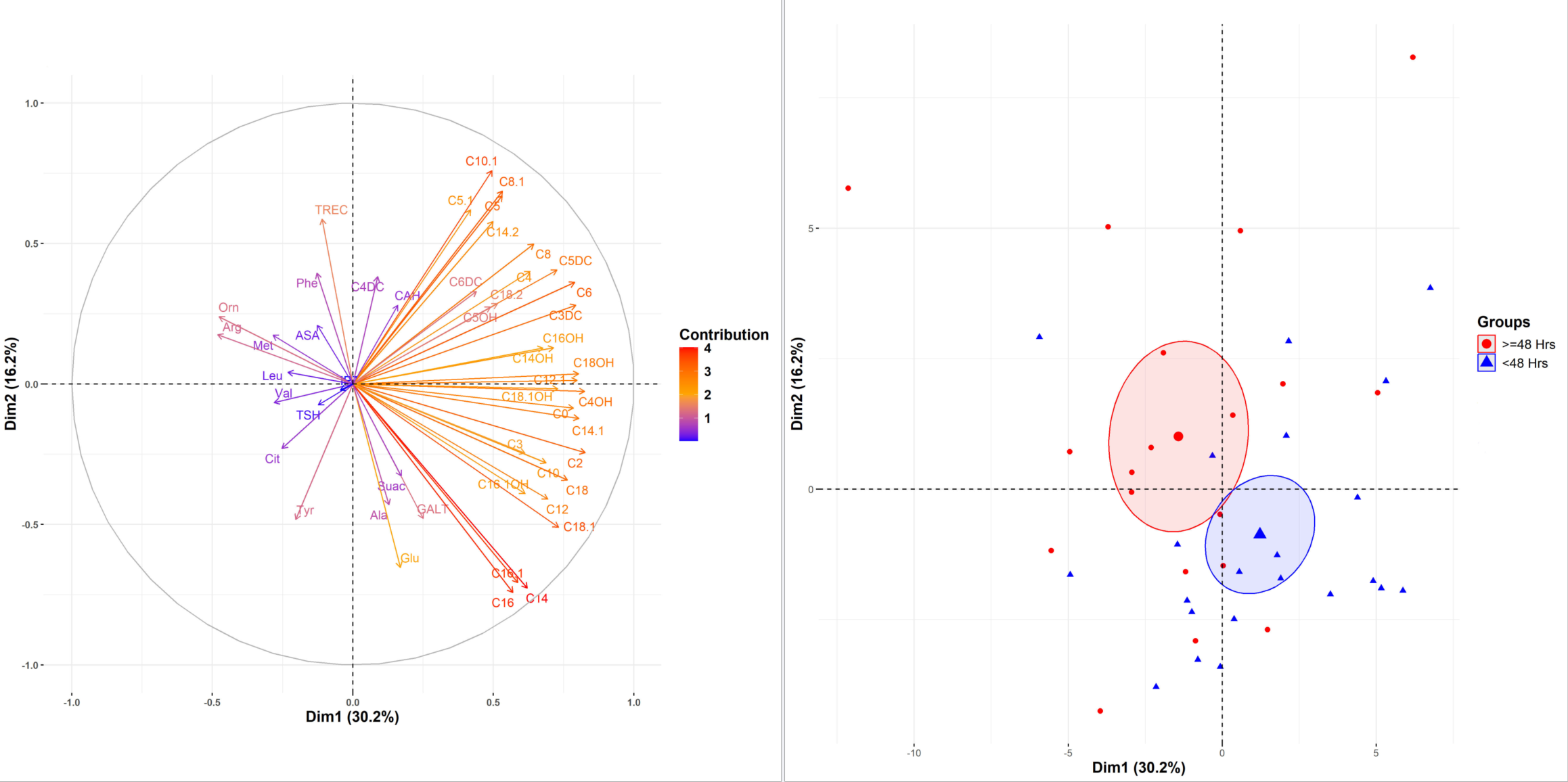Neonatal General 3: NICU Practices
Session: Neonatal General 3: NICU Practices
543 - The association of initiation of skin-to-skin care within 48 hours of birth and day 7 newborn metabolites using principal components analysis
Friday, April 25, 2025
5:30pm - 7:45pm HST
Publication Number: 543.6763
Scott P. Oltman, University of California, San Francisco, School of Medicine, San Francisco, CA, United States; Louie M. Swander, University of California, San Francisco, School of Medicine, San Francisco, CA, United States; Rebecca J.. Baer, UCSF, San Francisco, CA, United States; John M. Dagle, University of Iowa Stead Family Children's Hospital, Iowa City, IA, United States; Dawn Gano, University of California, San Francisco, School of Medicine, San Francisco, CA, United States; Kayla L. Karvonen, University of California, San Francisco, School of Medicine, San Francisco, CA, United States; Safyer McKenzie-Sampson, Stanford University School of Medicine, Palo Alto, CA, United States; Allison M. Momany, University of Iowa Stead Family Children's Hospital, Iowa City, IA, United States; Martina Steurer, UCSF Benioff Children's Hospital San Francisco, San Francisco, CA, United States; Nancy J. Weathers, University of Iowa Stead Family Children's Hospital, Iowa City, IA, United States; Larry Rand, University of California, San Francisco, School of Medicine, San Francisco, CA, United States; Elizabeth E. Rogers, University of California, San Francisco, School of Medicine, San Francisco, CA, United States; Kelli K. Ryckman, Indiana University, Bloomington, IN, United States; Laura Jelliffe-Pawlowski, New York Univeristy, New York, NY, United States
- SO
Scott P. Oltman, MS (he/him/his)
Epidemiologist
University of California, San Francisco, School of Medicine
San Francisco, California, United States
Presenting Author(s)
Background: Skin-to-skin care (SSC) immediately after birth has been associated with numerous short- and long-term benefits for preterm infants, including reduction in neonatal morbidities. The mechanisms underlying this association are not well understood. Investigation into biomarkers that may link SSC and neonatal morbidities could improve our understanding of SSC’s protective effects. Neonatal metabolic function has been associated with neonatal morbidities, but the relationship between newborn metabolites and SSC has yet to be investigated.
Objective: Determine whether initiation of SSC within 48 hours of birth for very preterm infants ( < 32 weeks) was associated with altered newborn metabolic function measured on day 7 of life.
Design/Methods: This study included 41 very preterm infants ( < 32 weeks gestation) from the PROMPT (Predicting Maturity, Mortality, & Morbidity in Preterm Newborns) Study at UCSF Benioff Children’s Hospital (2021-2023). Metabolic data were collected from newborn blood spots on day of life 7. Information on skin-to-skin care (SSC), outcomes, demographics, and clinical details were abstracted through medical records. Logistic regression assessed associations between SSC within 48 hours of birth and 49 natural log-transformed metabolites. Principal components analysis was used to identify metabolic patterns and as data dimension reduction given the small sample. Eigenvalues determined the two components that explained the most variance and 95% confidence ellipses were plotted. MANOVA was also applied to analyze the principal components accounting for 80% of the variance and assess metabolic patterns between groups.
Results: Within our population, 22 (53.7%) infants had SSC initiation within 48 hours of birth. Elevated levels of C10, C12:1, C14, C16, C16:1, C18, C18:1, and free carnitine and reduced levels of phenylalanine, leucine, and ornithine were associated with early initiation of SSC. The two most explanatory principal components accounted for 46.4% of the variance in the data. The early SSC initiation weighted metabolic mean was distinct from that of late SSC initiation, and exhibited the strongest correlations with C2, C14, C16, C16:1, and C18:1. MANOVA testing of the eight principal components comprising 80% of variance was significantly different between groups (Wilks’ Lambda p-value = 0.047).
Conclusion(s): Newborn metabolic function is associated with initiation of SSC within 48 hours of birth in very preterm infants. This relationship may be critical to understanding etiologic pathways between SSC and the positive outcomes commonly associated with SSC.
Table. Univariate association between metabolites and initiation of skin-to-skin care within 48 hours.
.png)
Principal Component Analysis of Metabolic Patterns by initiation of skin-to-skin care within 48 hours.
 PCA of newborn metabolic patterns. Left plot: Metabolic markers' contribution to the variance in the data. The length of the arrows represents the contribution of each metabolic marker to the principal components, with color intensity indicating higher contributions. Right plot: individual samples categorized by timing of skin-to-skin care initiation (≥48 hours in red and <48 hours in blue). Individual points and their barycenters, with ellipses representing 95% confidence intervals for each group, highlighting the separation between groups based on their metabolic profiles.
PCA of newborn metabolic patterns. Left plot: Metabolic markers' contribution to the variance in the data. The length of the arrows represents the contribution of each metabolic marker to the principal components, with color intensity indicating higher contributions. Right plot: individual samples categorized by timing of skin-to-skin care initiation (≥48 hours in red and <48 hours in blue). Individual points and their barycenters, with ellipses representing 95% confidence intervals for each group, highlighting the separation between groups based on their metabolic profiles.
